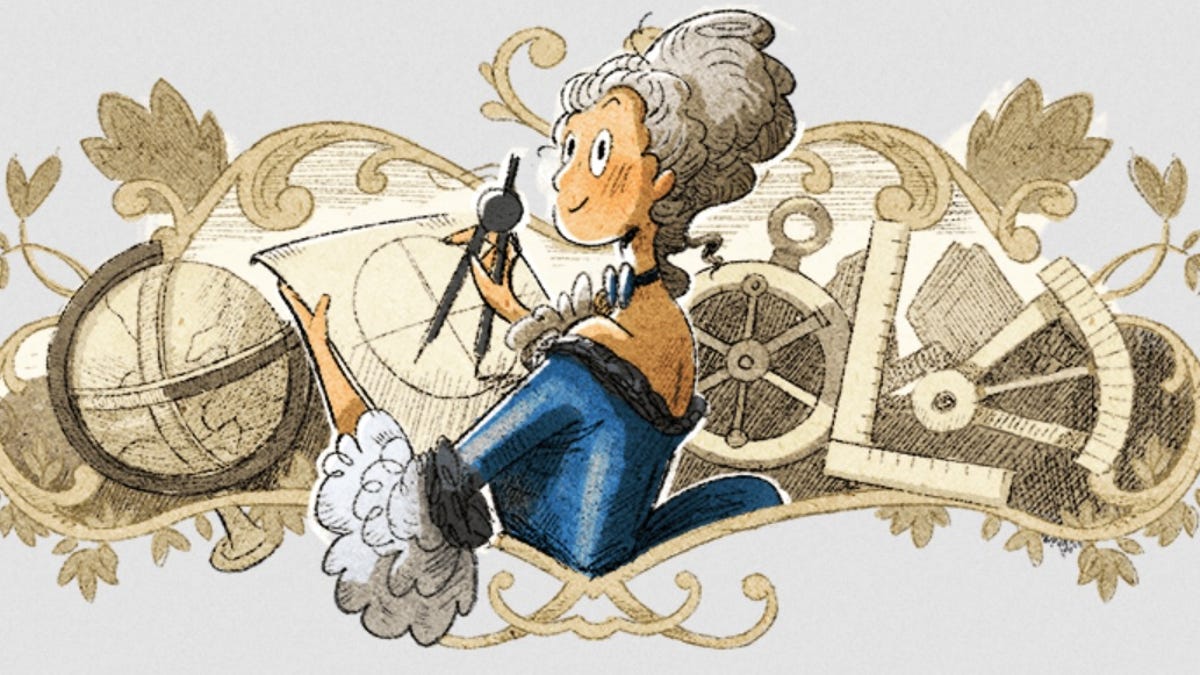Google Doodle honors French mathematician Émilie du Châtelet
She predicted the existence of infrared light, but her contributions are often overshadowed by her relationship with Voltaire.

French noblewoman Émilie du Châtelet was a mathematician, physicist and philosopher whose contribution to science made theories of physics more accessible. But her legacy is often obscured by her association with Voltaire.
Du Châtelet's most recognizable contribution to science is her translation of Isaac Newton's 1687 book Principia, considered one of the most important works in the history of science. Du Châtelet's translation and added commentary on total energy is still considered the French standard.
To honor her achievement, Google dedicated its Doodle on Friday to du Châtelet on her 315th birthday.
Émilie du Châtelet was born Gabrielle-Émilie Le Tonnelier de Breteuil into an aristocratic Parisian family in 1706 and received an exceptional education in science, music and literature. She augmented her studies with fencing and linguistics lessons, becoming fluent in four additional languages by the age of 12.
But she came of age at a time when it was unusual for women to pursue careers in the sciences, so she wed in her 20s and had three children, while still continuing her research. That led to a groundbreaking physics paper in 1737 that suggested different colors of light had different energies and predicted that something now known as infrared light carried heat. She was also the first person in history to suggest that total energy can be conserved rather than lost to momentum, a concept now widely accepted.
In addition to her translations, du Châtelet made significant contributions to philosophy, examining and combining many philosophers' ideas on religion, philosophy and the natural world. But her influence is often overshadowed by her longtime romantic relationship with French philosopher Voltaire.
The pair partnered in 1738 on the Elements of Newton's Philosophy, which, under Voltaire's name, helped explain and popularize Newton's theories. Her magnum opus was the 1740 publication of Institutions de Physique, a work of natural philosophy thatcombined metaphysics and physics and would go on to influence later Enlightenment thinkers.
She died in childbirth at the age of 42 in 1749, and her groundbreaking translation of Principia wasn't published until 1759, 10 years after her death.

